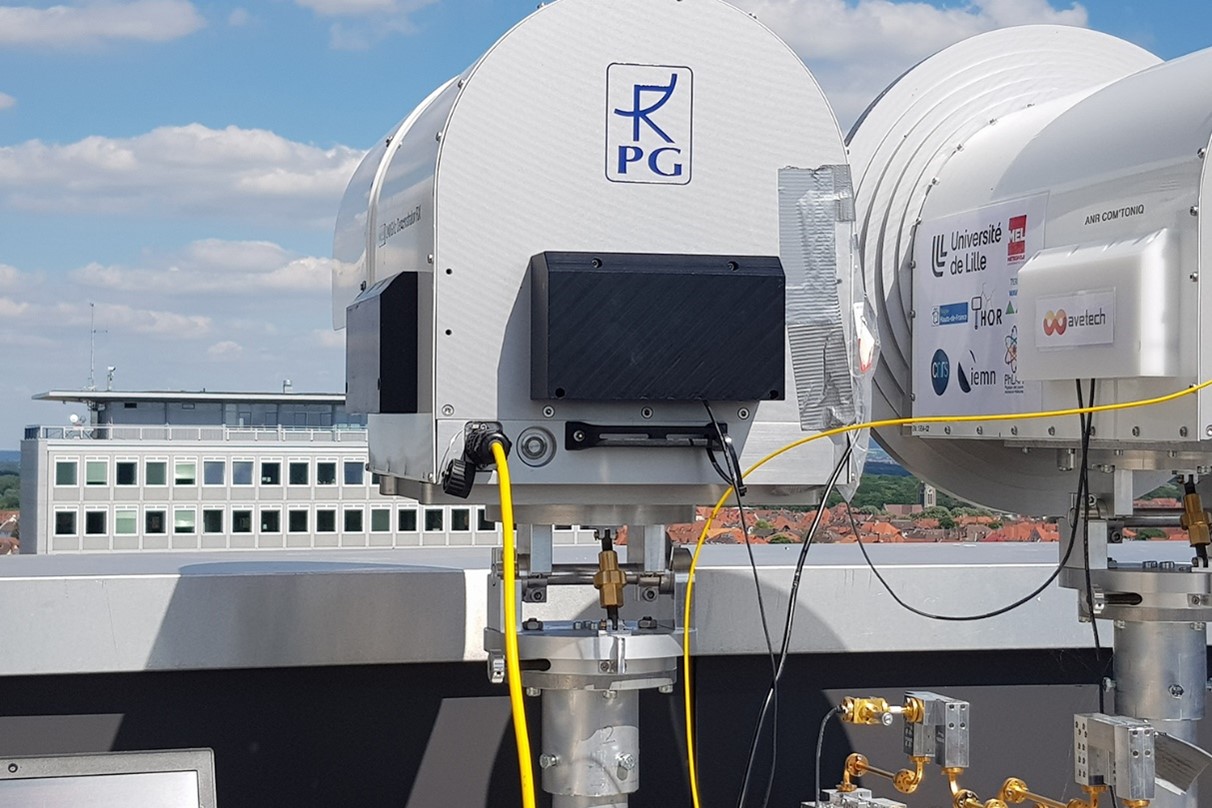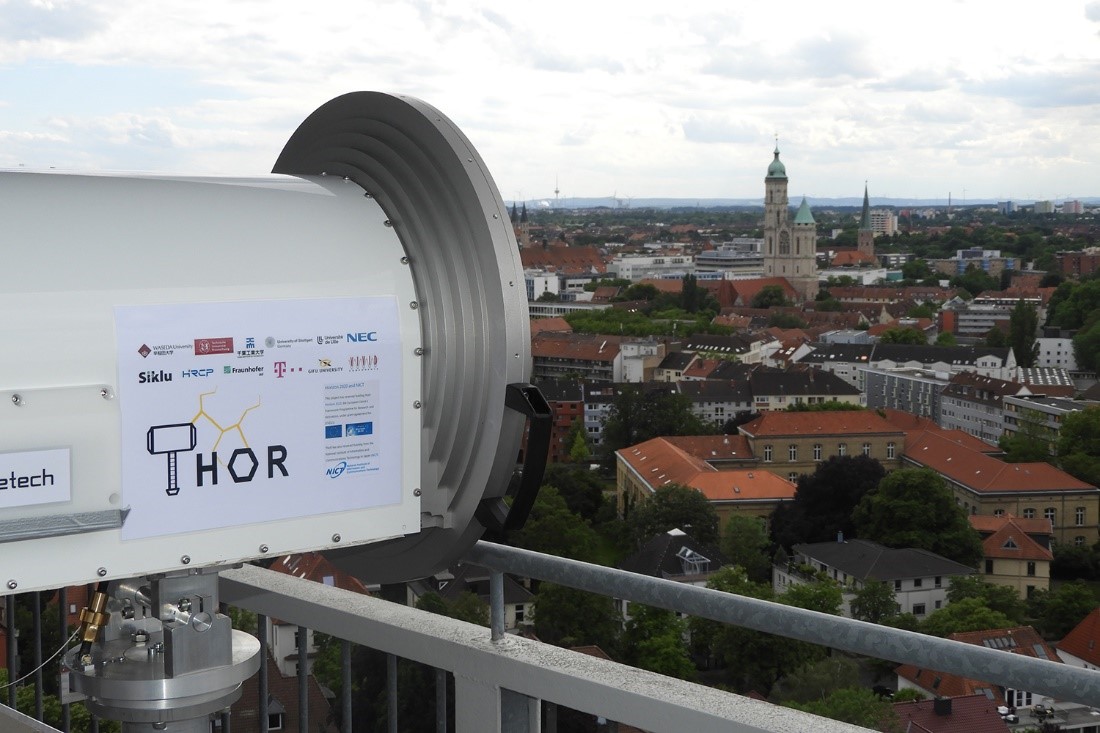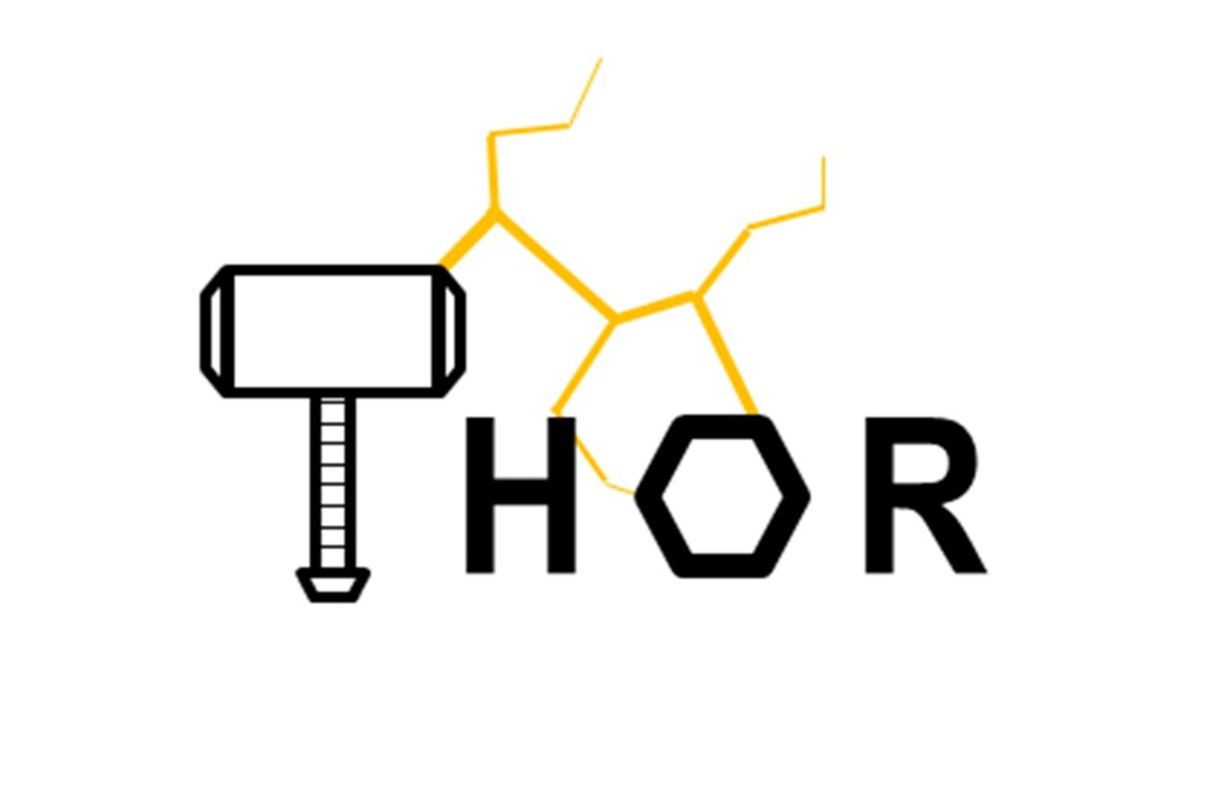Bidirectional THz radio link will be presented in final workshop
Milestone of THz communication
Scientists from a project coordinated by Technische Universität Braunschweig in Germany and Waseda University in Japan with ten other partners from five countries including Fraunhofer IAF have succeeded for the first time worldwide in developing a bidirectional THz radio link that can be connected as a “backhaul” to the data network of mobile radio providers. This link achieved by the Horizon Europe-funded ThoR project, can realise high data rates and thus play an important role in the network infrastructure of the future. On 29 and 30 June, the THz radio link will be presented in a final workshop of the ThoR-Project.



Fibre-optic cables are not always the best option when it comes to transmitting data. Especially in cities, it is often not possible to connect every base station of the mobile network by cable. Radio relay links provide an alternative solution. With the help of antennas mounted on roofs, they can bridge distances of up to one kilometre. This creates important backhaul connections between mobile radio cells and the nodes of the mobile radio network without the need for any road construction work.
Until now, the high data rates produced by the 5G mobile communications standard, which will continue to increase in the future 6G standard, favoured a fibre-optic connection between stations to the data networks. The international ThoR project has now succeeded in developing a bidirectional terahertz radio link that can reliably transmit these high data volumes. The frequency range above 300 gigahertz is used for this as it offers enough spectrum for high data rates.
Key technologies by Fraunhofer IAF
One of the key enabling technology for the implementation of the ThoR radio link are the high-speed transistors developed at Fraunhofer IAF. In cooperation with the University of Stuttgart, novel high-frequency circuits have been developed based on Fraunhofer IAF's mHEMT technology and packaged into compact THz front-end modules. Integrated into the backhaul link developed in the ThoR project, high-speed data transmission in the THz frequency range around 300 GHz is thus made possible.
World’s first radio link of its kind
The ThoR-backhaul link is the only one of its kind in the world to offer a bidirectional real data connection and connects TU Braunschweig’s IT centre with the Oker high-rise building over a distance of 160 metres. It can transmit data rates of 2×20 Gbit/s net at a bandwidth of 2×8.64 GHz and is scalable over the bandwidth so that higher data rates can also be realised. Professor Thomas Kürner, coordinator of the European part of the project: “We have realised an application-oriented complete solution here, which can already be used as a backhaul link in the data network in the near future.” In addition, as the first backhaul link of its kind, its functionality also complies with the IEEE 802.15.3 standard.The IEEE 802.15.3 standard was already developed in the run-up to the ThoR project and substantial research contributions were made by TU Braunschweig and several of the Japan-based partners.
Project ThoR
On 29 and 30 June, the final workshop of the ThoR project will take place in hybrid form. In addition to attending the workshop in person in the Aula of the Haus der Wissenschaft (Pockelstraße 11, 38106 Braunschweig), it will also be possible to participate online. The core of the workshop is the demonstration of the backhaul track with a tour of the developed THz hardware.
The ThoR project is funded by the EU through the Horizon 2020 research framework programme (Grant Agreement 814523) and by the National Institute of Information and Communications Technology in Japan with a total of three million euros. The project started on 1 July 2018 and will end on 30 June 2022.
Partners of the ThoR Project: TU Braunschweig (EU coordinator, Germany), Waseda University (Japanese coordinator, Japan), Chiba Institute of Technology (Japan), Gifu University (Japan), University of Stuttgart (Germany), Fraunhofer Institute for Applied Solid State Physics IAF (Germany), University of Lille-CNRS IEMN&PhLAM Laboratories (France), HRCP R&D Partnership (Japan), Vivid Components Ltd (UK), Siklu Communication Ltd (Israel), NEC Corporation (Japan) and Deutsche Telekom (Germany/Czech Republic).
Press release of TU Braunschweig Milestone of THz communication [click to external website]
The use of this photo is permitted exclusively in connection with this press release and under indication of the copyright.
Last modified:
 Fraunhofer Institute for Applied Solid State Physics IAF
Fraunhofer Institute for Applied Solid State Physics IAF